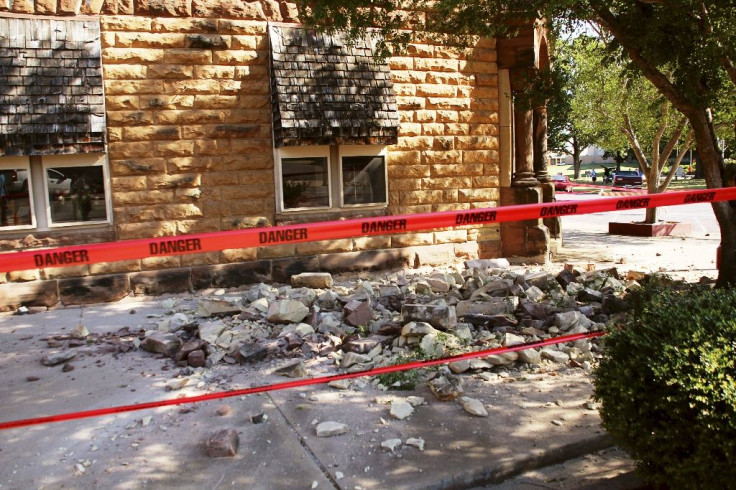Kansas Earthquakes Linked To Oil & Gas Industry Wastewater Disposal, Study Claims

Days after Kansas legislators rejected a bill that would have restricted the underground disposal of wastewater from the production of oil and gas, a new study by researchers from the Seismological Society of America (SSA) said there was a link between that method of wastewater disposal and the increase in number of earthquakes in the state, particularly in its southern parts.
It is not like Kansas had no earthquakes before the recent discovery of fossil fuels in the state. However, for several decades before 1973, there were no earthquakes reported from the area that were felt by humans, and between 1973 and 2012, there was only one felt earthquake, which was magnitude 2.0. From 2013 to 2016, Harper and Sumner counties (sites of intensive oil and gas production) had 115 earthquakes of magnitude 3.0 or higher, while the rest of the state had another 12 in those 4 years. There were also six earthquakes of over magnitude 4.0 between 2012 and 2016.
If considering all earthquakes irrespective of magnitude, the two counties that were specifically looked at in the study recorded 6,845 of them between March 2014 and December 2016, according to data from the United States Geological Survey (USGS). SSA’s Justin Rubinstein and his colleagues analyzed the data and “found that the dramatic uptick in seismicity correlated in time and location with increases in wastewater disposal that began in 2012 — and that decreases in seismicity during that time also corresponded to decreases in disposal rates.”
The researchers also said there was a very low possibility of these changes being entirely random, and placed the probability at about 0.16 percent.
They cited the fact that following rules limiting wastewater injection in the region, formulated by the Kansas Corporation Commission and taking effect in July 2015, there was a decrease in seismic activity as well. But Rubinstein said the decrease could also be a result of economic decisions made by companies, not just regulation.
There’s no question that economics plays a role here because injection started to drop off before the new rules went into place. It certainly seems probable that regulations have an effect but we would need to speak to individual [oil and gas] operators to determine the extent of that effect,” he said in a statement Monday.
However, the reasons why companies chose to reduce underground wastewater injection — whether regulatory or economic — does not take away from the fact that there is a link between that and seismic activity in the region. The bill that was rejected Thursday sought to impose restrictions on wastewater disposal in over 400 other injection wells across Kansas.
The oil and gas industry made arguments opposing the bill, and even though they didn’t stand up to scientific scrutiny, lawmakers took the industry’s side. Edward Cross, president of the Kansas Independent Oil and Gas Association, reportedly blamed activists, saying the bill was based on false assumptions about how earthquakes are caused in Kansas.
“They offer ideas that are contradictory or otherwise separated from reality and try to manufacture debate that confuses policymakers and the public with assertions that are out of context and need more information for a complete and informed discussion,” he said.
That the injection of wastewater deep below the surface can cause earthquakes is a fact acknowledged by USGS, which has said, “Wastewater disposal is the primary cause of the recent increase in earthquakes in the central United States.”
But that doesn’t mean all injection of wastewater underground would cause earthquakes. There are various factors, some even unknown, that decide that, such as fluid pressures, what depth the fluids get to, and how susceptible the rock base is to the effects of fluids, according to the study. Kansas is in the second place now in the list of states with most earthquakes, following Oklahoma which has also seen a rise in numbers in recent years, following the discovery of oil and gas there.
It is also known now that earthquakes, both natural and human-induced, are “inherently similar” in terms of their destructive power and other characteristics.
© Copyright IBTimes 2024. All rights reserved.





















